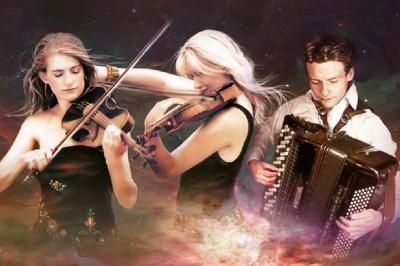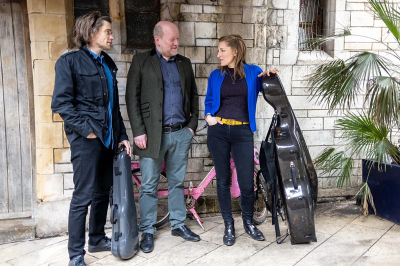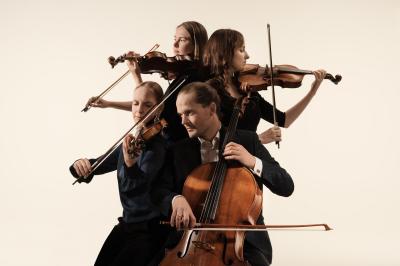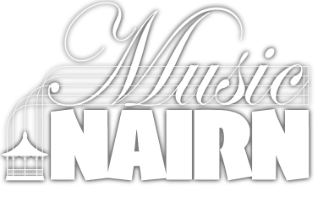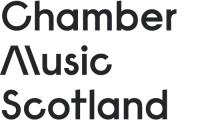Nikita Lukinov and the RCS Quartet
It was good to see the Nairn Community and Arts Centre packed for a Sunday afternoon concert staged by Music Nairn. The Russian/Scots pianist Nikita Lukinov has made a considerable name for himself, combining an extensive international touring schedule with a teaching role at the Royal Conservatoire of Scotland. He opened his Nairn concert with one of the really 'big beasts' of the piano repertoire, Mussorgsky's Pictures at an Exhibition. More familiar perhaps in the orchestration by Ravel, it is useful to hear the original for solo piano, particularly when it is as well played as it was by Mr Lukinov. Pouring his Russian soul into this most Russian of repertoire, he took us on a particularly vivid tour of the sequence of paintings by Mussorgsky's friend Viktor Hartmann. Hartmann had died in 1873 at the tragically early age of 39, and the exhibition mounted to celebrate his talent inspired Mussorgsky to write his most popular piano piece. It is an ingenious work, which depicts the chosen paintings in memorable cameos linking them with chorale-like episodes as the viewer moves between the works. These intervening Promenades, which share musical material, complement perfectly the dramatic evocations of the paintings, responding to each before anticipating the next.
It was good to hear the magnificent Music Nairn Steinway in full cry, particularly in the concluding peroration depicting Hartmann's plans for a great gate in Kiev. Equally impressive was Lukinov's atmospheric accounts of the Old Castle and the Catacombs, while the Ballet of the Chicks in their Shells and the Hut on Hen's Legs were alive with wit and energy. This performance was a tour de force, and the capacity audience responded with enthusiastic and extended applause.
For the second half of the concert Nikita Lukinov was joined by four students from the RCS in a performance of a reduction for Piano Quintet of Beethoven's Fourth Piano Concerto. Completed in Beethoven's lifetime and possibly with the composer's assistance, this version belongs to a tradition of chamber versions of larger works which before the days of the gramophone allowed audiences to enjoy this music in their own homes. While we missed the colour and articulation of the wind instruments, this was an effective arrangement, which made imaginative use of the string quartet. If some of the impact and energy of the orchestral version was missing, there was a delightful clarity to this performance with an intelligent interplay between strings and keyboard. It is interesting to note that when the Concerto was premiered in 1807 in a private concert for Beethoven's patron Prince Lobkowitz, it would almost certainly have relied on reduced forces.
Lukinov's cadenza in the opening movement saw him deliver a beautifully integrated overview of the various masterpieces Beethoven was working on at the time, some of which would appear alongside the Fourth Piano Concerto in its concert premiere in 1808. If in style this cadenza seemed to me to look ahead to the flamboyant keyboard style of the next generation of piano virtuosi such as Liszt, Beethoven was of course famous for his improvisatory skills and who can say what he would have been capable of in the heat of the moment! In response to an enthusiastic ovation from the capacity audience, Nikita Lukinov sent us away with a piano arrangement by Mikhail Pletnev of a charming movement from Tchaikovsky's Sleeping Beauty music depicting Little Red Riding Hood and the Wolf. It seemed only appropriate that some of us were inspired by this concert to go round the Annual Art and Photo Exhibition decorating the walls of this important local arts venue.
Forthcoming Events
